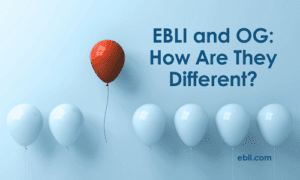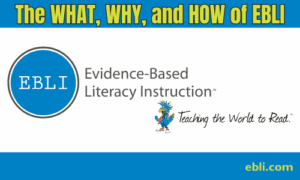Writing about whether phonics and syllable rules are necessary for student learning makes me feel somewhat anxious and quite vulnerable. I’m certain that teaching rules and syllable types is not necessary in order to learn to read well and quickly, but I am also acutely aware of the vitriol that can result from pushing up against these beloved and common instructional practices. When I even dip my toe into the ‘phonics rules and syllable types’ pool on social media or in discussions, and share about how phonics and multi-syllable words can be taught rules-free so student learning is more effective and efficient, the backlash is instant and severe.
I greatly appreciated this comment recently shared by Steven Dykstra in The Reading League Teacher Group: “The tendency, and we are all guilty of it to some degree, is to hold the things we like to a lower standard of proof than the things we reject.” This is profound, and also a dangerous practice. Even if we hold dear a firmly held belief, unless 95-100% of the learners we teach are proficient at reading, writing, and spelling, we need to be open to changing our instructional practices (and beliefs) until they are. Angie Hanlin, as Principal in a rural Missouri school, led her staff and students to improve state reading scores from 13% proficient to 100% (including Special Education students) in just 5 years. In interviews she often points out one of the critical components that lead to their success: “We changed the focus from looking at what and how we were teaching to what students were actually learning.” This is simply brilliant! If you have taught something but your students haven’t learned it, then the question that bears asking is “What do I need to do differently to ensure they learn it?”. I would add to this, especially as it pertains to rules, and point out that they not just learn it but are also able to apply it in reading, spelling, and writing.
My journey to learn how to teach reading did not include phonics rules or syllable types. By the time I learned how to teach my daughter Colleen to read back in the 1990s, I had been researching how to teach reading and spelling for about 6 months. The most popular process of the time, teaching memorization of words, didn’t make any sense to me. It had also been my daughter’s favorite ineffective go-to strategy; it didn’t work. Her ability to memorize all the words in one book did not transfer to her being able to accurately read those same words in another book.
Colleen had also already been taught traditional print to speech phonics, including rules, in her school in Guam. They taught Abeka phonics. Colleen was good with the simple code of 1 letter spellings but the wheels fell off totally when more complex code such as ‘ou’ in out, ‘ea’ in team, or ‘eigh’ in weigh came into play. She didn’t understand this at all. She was very inquisitive and questioned things that didn’t make sense. She had been taught the ‘two vowels go walking and the first one does the talking’ rule but asked why ‘out’ wasn’t pronounced ‘oat’ or why ‘great’ wasn’t pronounced ‘greet’. These were good questions, and I didn’t know how to answer them. So, she reverted back to memorizing and guessing…lots of guessing.
Everything I’d read for those 6 months of digging into how reading is taught referenced either phonics or whole language and neither of those approaches worked for her. So, I continued to search.
Finally, once I was led to the book Why Our Children Can’t Read and What We Can Do About It by Diane McGuinness, I realized that I’d most likely found the answer! First of all, the hypothetical story at the beginning of the book was my daughter’s story. Second, the speech-to-print process of teaching reading and the research behind it was laid out in a way that was logical, simple, and easy to digest. Finally, it actually made sense to ME so I was hopeful it would make sense to her. It did! Using the book Reading Reflex, based on Phono-Graphix instruction, I taught Colleen to read in 3 hours. Yes, she did have a foundation of understanding that letters represent sounds and knew how to blend them together so she had a bit of a head start. Even so, she was a year below grade level in reading in 2nd grade on the Iowa test. She preferred memorizing and guessing to sounding anything out. In her defense, few words in books she was expected to read in 2nd grade contained only simple cvc (fan), cvcc (fist), or ccvc (spot) words.
A few months after I taught Colleen I went to Florida to be trained in the Phono-Graphix speech-to-print instruction and not long after became a PGx trainer. I will be forever grateful for the foundation this training gave me! I’m so thankful that my first foray into actually teaching reading was with a process that is so effective and efficient. EBLI was born out of Phono-Graphix, with a focus on Tier 1 classroom as well as remediation instruction and expanding to a process that includes the 5 essential components of reading plus handwriting, spelling, and writing. The instruction is accelerated mostly because it is streamlined, explicit, sequential, taught with a focus on auditory first and not visual, and does not include the cognitive load and inconsistency of rules.
Rules were created to deal with a language that did not seem logical and it partially explained situations that occurred in many words. For example, sometimes when two vowels ‘go walking’ the first one ‘does the talking’. Actually, letters never talk or say anything but this means that when a learner sees 2 vowels next to each other, they say the letter name of the first vowel to indicate the sound represented. This is true 40% of the time but 60% of the time, there are exceptions to this rule. Here is a blog with a handy chart at the end to show how consistent (or inconsistent) this rule is. So there are more exceptions than rules, which makes it very challenging to follow the rules or know when to apply them!
Another rule, which the Washington Post called a ‘big lie’, is ‘i before e except after c’. This means that an ie will be together to represent the sound /ee/ except after a ‘c’, when it will be ‘ei’. So, this does apply to words like chief, priest, thief, brief, piece (and also words such as pie, friend, or quiet as the ‘ie’ represents a sound other than /ee/). The ‘except after ‘c’ works with words such as receipt or receive. Unfortunately, there are countless words where this isn’t the case. This article from Reader’s Digest shares that this rule is only true 25% of the time!
Syllable rules or types also are used to help make sense of how to read words with many syllables. The same challenges that hinder instruction with phonics rules can also cause difficulty with syllable rules. They are not consistent, they take a long time to teach, and they cause confusion and cognitive overload for many students. I am vaguely familiar with 2 of the syllable rules, open and closed syllables, but have never had the need to learn, or teach, syllable rules. However, many learners who I’ve taught at my reading center and in classrooms across the country have been taught syllable rules but many still struggled significantly with reading.
Speech-to-print instruction streamlines instruction when it comes to teaching multisyllabic words. The process with EBLI begins with significant support, guidance, and error correction then gradually releases to more independence once students learn more code and patterns and have more experience applying the learning process.
With speech-to-print, the teacher must be the sage on the stage for explicit instruction. There are tremendous benefits from this process. First of all, students can hear the whole word and break it into syllables based on what their ears hear their mouth say. They are not looking at a word at first so there is no letter name or visual interference. It is all about how the word ‘falls out of their mouth’. Syllables are easy to sing as the syllables are enunciated loud/soft/loud or soft/loud/soft. Think of the commercial for Ricola©: reeee cooo laaaa (loud, soft, loud). Each syllable has a vowel sound and the vowel can be easily held to be heard. Another example is glooooo….ooooo….oooooo ri a in the Christmas carol ‘Angels We Have Heard on High’. When accessing the syllables, we put placeholders for each syllable then we access each sound in each syllable and put placeholders for those. All of this is done before showing students the word. Then teachers guide students to match the spellings to the sounds, providing error corrections along the way. Prefixes, suffixes, root words, morphology, and word meaning are all pointed out during the instruction.
Multi-syllable word reading instruction is also supported at first, allowing students the opportunity to flex sounds for spellings where the same letter(s) represent several different sounds.
With both phonics and syllables, instruction that highlights the patterns and tendencies in the English language but avoids teaching with rules increases the effectiveness and efficiency of instruction. A rule means it happens all the time, which is not true with pretty much anything as far as the English alphabetic code is concerned. However, there is a logic to the language that is much more apparent when taught from sound (speech) to spelling (letters in print). When accessing speech-to-print, instructional time – even for kids diagnosed with dyslexia or reading and spelling many years below grade level – is dramatically decreased.
You can get a demonstration of what this instruction looks like in action in this R-Controlled vowels and Phonics/Syllable Rules webinar. For specifics about how we teach phonics in EBLI with speech first and pointing out patterns, check out our R-Controlled vowels blog.
Keeping our focus on efficient student learning helps us to hone our instruction so that the greatest gains are made in the least amount of time. Ideally, we want students to learn well and quickly so they are able to spend more and more time applying what they have learned in reading and writing.






2 Comments
[…] to note that we can teach multisyllabic words without teaching the syllable rules. You can read this article from EBLI, a speech-to-print program, that explains why from […]
[…] Phonics and Syllable Rules: Do We Need Them? by Nora Chabazi […]
Comments are closed.